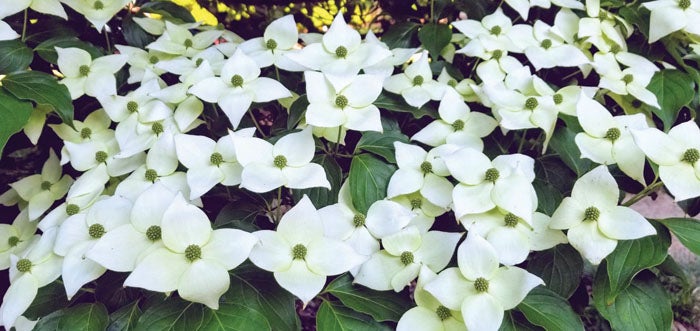Sudden warmth bringing out insects, diseases
Published 12:00 am Friday, May 11, 2018

- Submitted photo Kousa dogwood blooms later in the spring and the petals have a different shape.
Only a few weeks ago homeowners and strawberry growers were concerned about frost. Now we’re experiencing 90 degree weather. Any change in weather brings about almost certain changes within the landscape.
Many people have asked about disease and insect problems as well as other issues. Below are a few questions posed that may be of interest.
Question: My roses are beginning to bloom and I would like to see other types of roses. Isn’t there a big rose show in Salisbury this month?
Answer: Yes. The Rowan Rose Society is sponsoring their annual rose show, Saturday, May 26, at the Salisbury Civic Center, 315 Martin Luther King, Jr. Avenue in Salisbury. The show is free and open to the public from 1 to 5 p.m. Please note that this is a one-day show and has returned to the Salisbury Civic Center.
Question: I have carpenter bumble bees boring into my deck. They were here last year, but there seem to be more this year. What can I do to control them?
Answer: There is really no pesticide that will give extended protection against these pests. Once these insects take up residence, they return back each year to extend their family. There are two major problems dealing with carpenter bees: an effective chemical residue that endures throughout the entire period of bee activity and the ability to apply any pesticide to all the surfaces that need protection, particularly overhead on soffit and fascia boards. Other than swatting the bees with a badminton racket, your next best option is to apply a pesticide directly into the active tunnels and then seal up the hole with caulking or putty. There is an aerosol spray on the market with an extended nozzle spike that works well to eliminate the pest.
Question: My azalea has an usual growth on the leaves. I’m worried it may kill my shrubs. What is this and how do I control it?
Answer: What you have is most likely azalea leaf gall which is caused by a fungus. This disease is common in the spring, usually found on new leaves and flower buds. The leaves become thick and misshapen, turning pale green then eventually becoming white. It’s best to pick off diseased leaves as soon as you spot the problem. Most often this disease is not severe enough to initiate a chemical control.
Question: There is a beautiful dogwood tree at Hurley Park that blooms later than the other types of dogwoods. It is a special type of dogwood?
Answer: You’re probably referring to the kousa dogwood found near the entrance to the park. These are becoming very popular because of the late blooms and their hardiness. This flowering tree can adapt to full sun or partial shade. Go to https://plants.ces.ncsu.edu/




